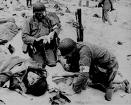As we commemorate D-day now 65 years later, this brings to mind for me how this and the previous World War shaped and propelled Plastic Surgery into the limelight of modern medicine.
The father of modern plastic surgery, British surgeon Harold Gillies (1882 -1960), developed many plastic surgery techniques during World War I. (1914-1918) Since this war was conducted mostly in trenches, there were horrific numbers of skull and face injuries. (sticking one’s head up was usually not a good idea) Never before had so many such injuries been seen. Broken jaws, lost noses, missing lips and wide open skull wounds caused by the weaponry of the time necessitated innovation in reconstructive surgical procedures. Some of the best surgical talent of the day from many European countries devoted themselves to restoring the faces and lives of their countrymen during and well after World War I. The first plastic surgery dedicated hospital came out of this war as well as the pedicled or tubed skin graft which became a work horse of tissue reconstruction for the next 75 years. By World War II (1939 to 1945), plastic surgery had become an integral part of most medical teams of the armed forces and the techniques developed in the first world war for open wounds, facial injuries and burns underwent further refinement. By the end of World War II, many plastic surgeons served in the armed forces, treating wounded soldiers, sailors, and airmen. New medical foundations were formed, and scientific journals were written especially for plastic surgeons. The most important one, in 1946, was the Journal of Plastic and Reconstructive Surgery, the official publication of the American Society of Plastic and Reconstructive Surgeons (ASPRS).
The recent and ongoing conflicts in Iraq and Afghanistan is bringing new types of war wounds and injury mechanisms. While the casualty number remains less than the great World Wars, the challenges posed by today’s weaponry is teaching new lessons about reconstruction and tissue healing. Born out of war, plastic surgery remains at the forefront of surgical innovation as witnessed by recent successful facial transplants.
Dr. Barry Eppley
Indianapolis, Indiana



